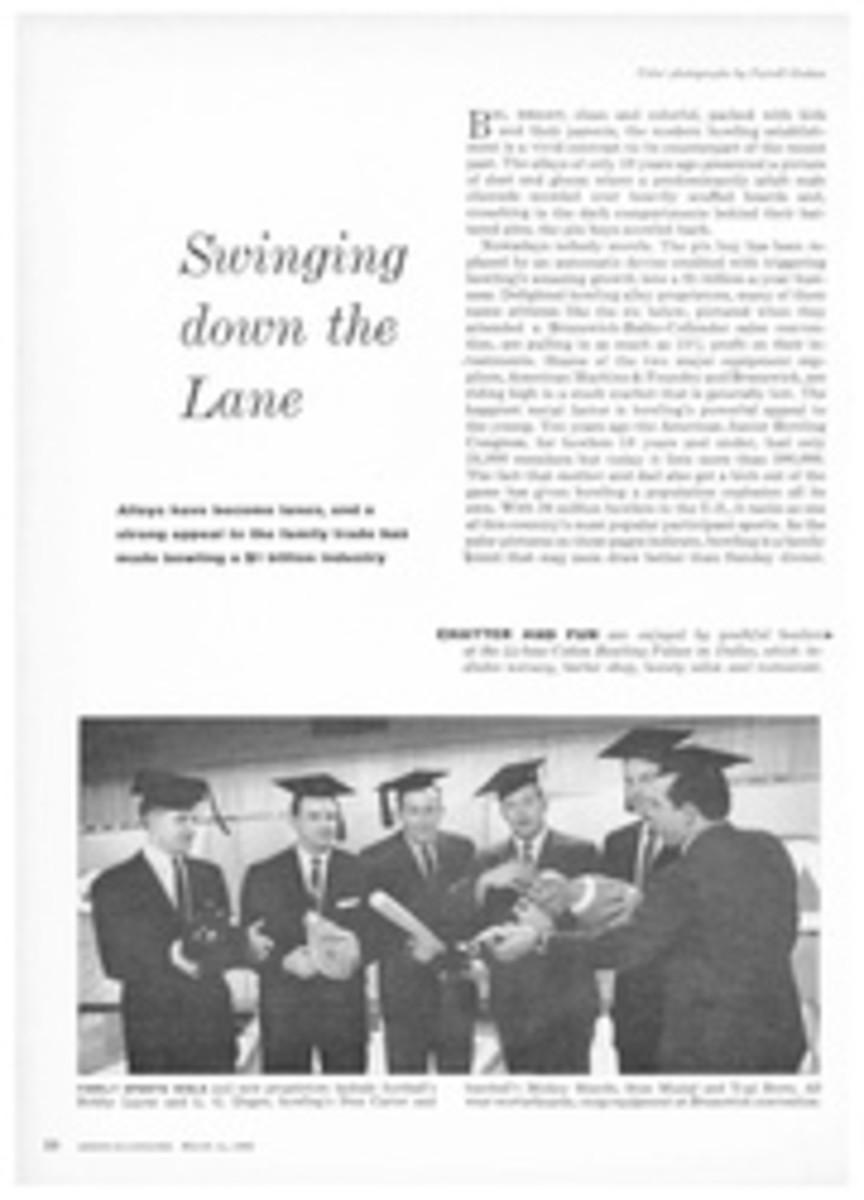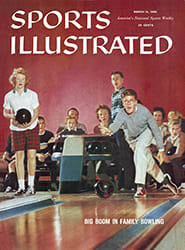
THE FASTEST MAN ON WHEELS
Professional bicycle racing was at its peak in the United States when Marshall Walter (Major) Taylor, one of eight children of a Negro Civil War veteran, won the 1899 world championship and the U.S. title a year later. Newspapers hailed this remarkable young sprinter (he was 21 years old when he became world champion) as the "Fastest Bicycle Rider in the World." Taylor, one of the earliest of his race to become a national champion in any sport, then spent the next four years touring Europe and Australia. He rode wherever bicycle racing was a major sport and beat every national champion he met.
Although he competed against the best sprinters and middle distance men of the world in open competition (paced and unpaced), match racing was Taylor's forte. This was a style of riding in which each rider jockeyed for a position that would force his opponent to set the pace. At times, both riders came to a standstill, balancing on their wheels without a foot touching the track. The jockeying could go on up to a few hundred yards from the finish line before either rider tried for a breakaway. Then, with feet dug into pedals, backs humped and hands gripping handlebars tightly, the riders tore around the last turn and into the homestretch. Over the finish line they flashed, maybe inches apart, while the stands rocked with hysteria.
It was only by accident that Major Taylor, the speed phenomenon of his day, became a bicycle racer. After his service on the Union side in the Civil War, Taylor's father became a coachman for the Southards, a wealthy Indianapolis family. As a young boy, Taylor helped his father exercise the horses. The Southards took a fancy to the bright young lad and employed him to be a companion and playmate for their own son, who was the same age as Taylor. All clothes were provided and the two dressed like twins.
Most of the boys on the Southard side of the tracks had bicycles, and some would let Taylor take turns riding. In no time at all he could ride with the best of them. Then young Southard insisted that his companion have a wheel of his own, and it was bought for him. Shortly afterwards, the Southard family moved to Chicago, and the coachman's son skidded from the dream life of a "millionaire kid" to the prosaic job of errand boy. But he still had his bike.
Taylor was a born trick rider, and he evolved his own routine. He did so well teaching himself that the fancy stuff helped get him out of jams when fighting for championships on the tracks of the world. But its immediate reward was a better job. Appropriately, it was in a bicycle shop. His morning chore was sweeping out and straightening up. His afternoons were devoted to trick riding in the street in front of the store in a fancy uniform. The stunt worked out better than Taylor and his boss anticipated, for both received a calling down from the police for drawing crowds that blocked traffic.
AN EYE-CATCHER
One day a beautiful gold medal was put on display in the window. It was to be first prize in the annual 10-mile road race promoted by Taylor's employer, and as Taylor later wrote in his autobiography, "I just couldn't keep my eyes off it." Once he got up the nerve to pin the medal to his lapel and strutted before a mirror, envying the lucky pedaler who was going to cross the line first.
The big day came and young Taylor took his place among the excited spectators. Suddenly his boss had an inspiration. He stepped over and took the boy by the arm: "Come here, young man, you've got to start in this race." Taylor was scared. He had never even seen a bicycle race, to say nothing of riding in one. But he was game, and with tears in his eyes he was shoved off with the limit handicap, 15 minutes.
His boss had persuaded the 13-year-old Taylor to enter by telling him all he had to do was ride up the road a little way just to please the crowd and then come back when he got tired. But Taylor stayed in the race against dozens of crack riders, and to everyone's astonishment, won it, crossing the finish line with but six seconds of his 15-minute handicap left. He then collapsed in the middle of the road, but the gold medal was his to keep.
That race was the start of Major Taylor's riding career, and after five years of highly successful amateur road and track racing in various parts of the country, he turned professional and made his debut in the old Madison Square Garden. In a half-mile meet prior to the annual six-day race Taylor won his first cash prize, and almost lapped the field as well. Failing to hear the bell for the last lap, he tore around three more times, winning the $200 purse the hard way. At midnight he entered the six-day grind. That was in the days when it was each man for himself, eating, resting as best he could, and even falling asleep on his wheel. At that point, a rider would be wakened by a dash of cold water in the face, or would be carried off by his trainer to be dumped on a cot for a short nap. Taylor finished eighth, with 1,787 miles to his credit, an exceptional feat for a sprinter. In performing this tour de force he demonstrated his extraordinary versatility.
In 1897, the first year that Taylor was eligible for the National Circuit races, racing events were under the control of the League of American Wheelmen. Though Taylor's right to ride at every track in the circuit was legitimate in every way, his entry was turned down by the promoters of all the southern tracks. In 1898, midway in the season, most of the riders revolted against what they considered the dictatorial attitude of the LAW. They formed the American Racing Cyclists' Union, which later became the National Cycling Association. That year there was such a muddle that the national championship never was settled to the satisfaction of all.
In spite of cliques among certain white riders, who ganged up on him in teamwork, pocketing, elbowing and riding him wide on the turns, Taylor won major championships in 1899 and 1900. But the battle to win under those conditions was an ordeal he didn't feel like repeating. Taylor decided to try his luck on European and Australian tracks, where he felt he would get a better break from his opponents. In part, his anticipations were justified, though he did stir up some hostile feeling when he beat each country's best riders.
HE BEAT THEM ALL
France had her "invincible" Jacquelin and later Poulain, Denmark her Ellegaard, Holland her Meyers, Belgium her Grognia, England her Jenkins, Switzerland her Gougoltz, Germany her Arend; but they all fell before the terrific jump of the boy from Indianapolis. In many races, it seemed impossible for him to get up in time, yet he would come through in the last few yards. He reveled in hairline finishes, which was one of the reasons for his great popularity with fans. His American and European triumphs were repeated in Australia, where he defeated one of the world's greatest racers, Don Walker.
Taylor, of course, was not unbeatable. He had his defeats as well as his victories. And he was not above doing a bit of elbowing himself, at which he was very clever. He claimed he employed this nimble maneuver
only in self-defense. Taylor needed it badly at times, for he was one of the most daring riders on the track. Perhaps he had to take greater risks than his white rivals or be left in the ruck. He was also accused of jumping through on the pole with the slimmest possible chance of getting by without a spill. In such pinches, his trick riding ability was a lifesaver. Taylor's superb physique and his rigorous system of training enabled him to keep in perfect condition throughout an entire season of racing. He attributed his ability to transmit every ounce of energy into propelling himself and his mount at maximum speed over a given distance to his scientifically correct position on the wheel, and the perfect coordination he maintained between man and machine. The system of leverage he worked out was worthy of an engineer.
Because of religious scruples, Major Taylor refused to ride on Sunday. In Europe and the U.S., in particular, this was a considerable handicap, since Sunday was the big day at most bicycle tracks. Taylor was just as meticulous about his personal habits. He was a total abstainer, from tobacco as well as liquor.
One of this great, clean-living athlete's proudest moments came when Teddy Roosevelt grasped his hand and exclaimed: "Major Taylor, I am always delighted to shake the hand of any man who has accomplished something worthwhile in life, and particularly a champion.... I was especially pleased and interested while you were racing abroad, defeating all the foreign champions, and carrying the Stars and Stripes to victory."
In 1910, Major Taylor retired from bicycle racing. Except for one brief comeback attempt six years later (he won an Old Timers' race in New Jersey), he never rode again. Taylor settled down in Worcester, Mass., and became a real estate broker. His interests shifted from bikes to automobiles, and in his spare time, he invented various types of shock absorbers. In 1932, at the age of 54, Major Taylor died from a heart ailment, developed during those tumultuous years when he was the world's fastest bicycle rider.
PHOTO
WARMUP SPIN BY MAJOR TAYLOR AND DANISH CHAMPION ELLEGAARD PRECEDES PARIS RACE WON BY TAYLOR IN STRAIGHT HEATS
PHOTO
LEADING FIELD ACROSS FINISH LINE, MAJOR TAYLOR BREAKS AUSTRALIAN MILE MARK BEFORE 30,000 FANS AT SYDNEY IN 1903

